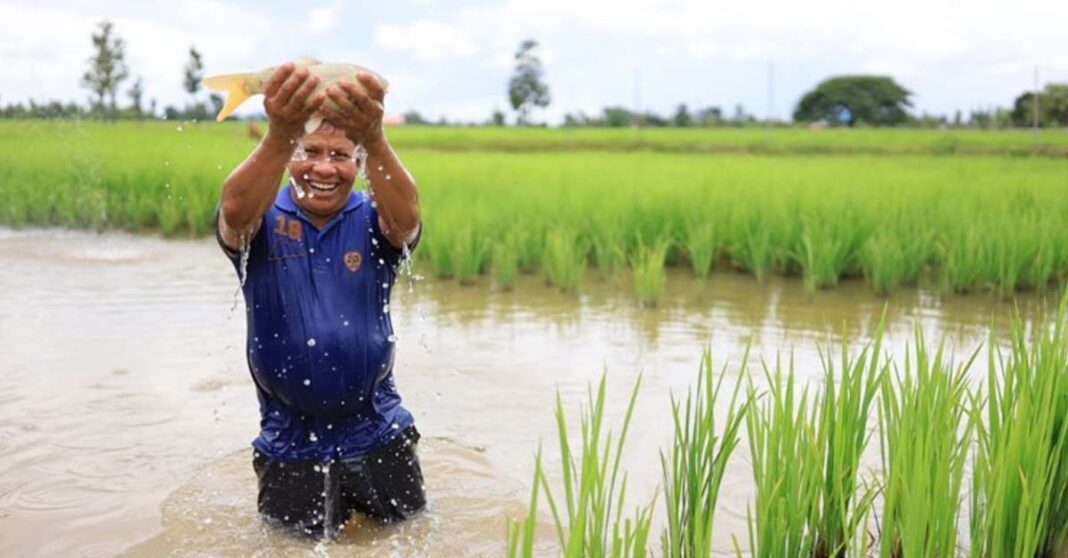The consumption of raw freshwater fish, a staple diet for millions of people in many parts of Southeast Asia, is coming under closer scrutiny after the detection of a foodborne hazard in several countries of the region, prompting a warning by food safety experts at the Food and Agriculture Organization of the United Nations (FAO) and others.
An invasive disease, known as Group B Streptococcus (GBS) Streptococcus agalactiae linked to the consumption of raw freshwater fish, has led FAO’s Regional Office for Asia and the Pacific to publish a risk profile to raise awareness of the threat.
“Many people aren’t aware of the risks associated with consuming raw freshwater fish, and it is a very common practice in Southeast Asia,” said Masami Takeuchi, FAO Food Safety Officer. “But the illnesses this practice can cause can be serious, though not always obvious, nor immediate, and in some cases that can make it difficult to diagnose and treat in time.”
UNDERSTANDING THE RISK – LEARNING MORE ABOUT IT
The problems caused by eating raw tainted freshwater fish in this region were first discovered in 2015, when at least 146 people fell ill in Singapore. Some experienced severe consequences, including amputation of limbs caused by severe blood poisoning. The case was later linked to the Group B Streptococcus (GBS), and the specific strain responsible for the outbreak was sequence type 283 (ST283).
“Many microbiologists were surprised as invasive GBS disease had not been known to be foodborne previously,” said Timothy Barkham, who contributed to FAO’s work, and is an Associate Professor at the Department of Laboratory Medicine, Tan Tock Seng Hospital, Singapore. “Another surprising point was that this foodborne GBS ST283 affected healthy adults. GBS is normally very uncommon in healthy adults.”
Outside of Singapore, cases of invasive GBS ST283 disease have also been documented in China, Hongkong SAR, the Lao People’s Democratic Republic, Thailand and Viet Nam. However, as little is known, and the list of uncertainties and identified data gaps is extensive, a full risk-assessment is not yet possible. Without sufficient and validated data-sets, a much wider geographic scope of research is needed, the experts say, to determine if the disease is only indigenous to Southeast Asia or if it extends beyond. It is also possible that GBS ST283 cases have been extremely under-reported.
WHAT COUNTRIES CAN DO
It would be best for competent food safety authorities to have full risk-assessment results at hand to consider risk-management options, but with all the uncertainties and the lack of data, only limited practical recommendations can be offered for now.
In general, it is a good idea to promote good aquaculture practices (GAPs). Also planning of a general and targeted food safety campaign, aimed at consumers, local populations or villagers to inform them of the potential risks of consumption of raw freshwater fish could work as an effective preventative measure, especially in locations where consumption of raw freshwater fish is known to be common.
“While it is important to continue strengthening the various aspects of national food control systems, it is important for the competent authorities to be aware of the issue first,” Takeuchi, said. “As the issue is relatively new, having an overview of what is currently known on this foodborne disease is possible by reading the FAO risk profile, discussing among all stakeholders in food safety, public health and fisheries/aquaculture to exchange information and share views – these are good first steps,” she said.
Specifically, below, are consideration points experts have suggested to communicate to stakeholders and villagers:
* visual inspection: discarding visibly abnormal/diseased fish is expected to reduce risk, but they should not rely on visual inspections alone, as healthy-looking fish are no guarantee of safety;
* heat-treatment: proper heating /cooking is the only known effective risk mitigation measure; and
* non heat-treatments: there is no evidence that traditional fish preparation methods without heat treatment are effective. Freezing is not an effective control measure.



